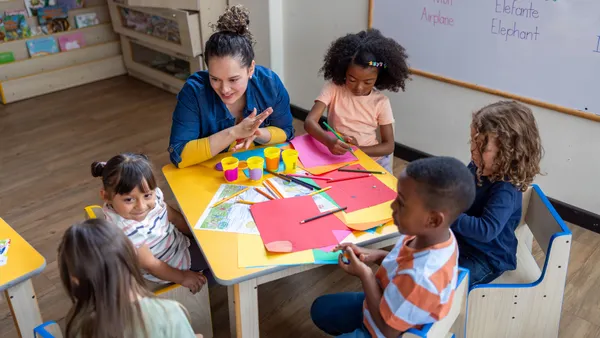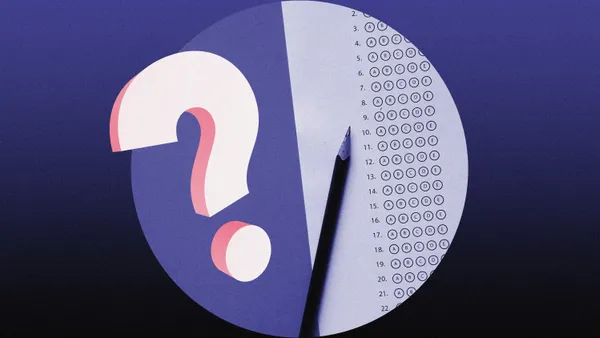Dive Brief:
- With proper guidelines and accountability frameworks, artificial intelligence tools can enhance the project-based learning experience for both educators and students, said Jessica Garner, senior director of innovative learning at International Society for Technology in Education.
- “Technology should not be this isolated thing that happens outside of curriculum, instruction and teaching and learning and all of those different pieces,” said Garner, who has experience training educators on the intersection of technology and curriculum.
- Garner emphasized that when leading AI training specifically, it’s important to focus on how to use the technology to improve the learning experience for students.
Dive Insight:
Project-based learning involves students spending an extended period working on a project that addresses a real-world problem or answers a complex question. This approach has been shown to enhance student engagement and improve student outcomes.
When incorporating AI in the classroom, Garner suggests that students should learn to utilize AI as a tool that enhances their learning rather than having it do the work for them. She said that project-based learning instruction particularly lends itself to work alongside AI for several reasons.
For one, since project-based learning already connects class material to real-world problems, Garner said, students are more likely to discern whether their use of AI will enhance or hinder their learning.
“If students see value in the assignment, they want to do what's more helpful to their learning,” Garner said.
Project-based learning instruction can be intimidating for educators who may not know where to start. AI, Garner said, can serve as a thought partner in this scenario. When educators input the type of lesson they are trying to create — along with the goals and standards the lesson must meet — the AI tool can generate project assignments and activities for each stage of the project, she said.
For students, Garner said, AI can also serve as a way to receive feedback, and depending on the problem or project, AI can potentially help draft part of it.
Garner explained that students can input their ideas and any challenges they’re facing and receive some initial guidance before meeting with their teacher. She added that AI can also help coach students on delivering presentations by having them record themselves and ask AI for feedback on what they could have done better.
“When I think about the role of the teacher in the classroom, there's one teacher and, a lot of times, 30 kids. And even if they're working in groups, you still have six different groups to try to get to in the classroom,” Garner said. “So if you can use AI as the first level of feedback, students can refine and hone in a little bit on what they're trying to do, so when the teacher gets to each group, they can provide really targeted, specific feedback.”
However, Garner also cautioned educators to be mindful and to always question and verify the sources the AI tool uses to find information. She said it's important to make sure that these activities are truly aligned with school and district standards and pedagogical themes.
Similarly, she suggests that schools and districts ensure they have their own acceptable use guidelines for AI. Garner said that in a lot of cases, they don't necessarily need a brand new policy, but they do need to look at their existing policies to make sure that whatever tools their teachers want to use are covered, as well.
ISTE also provides hands-on AI project resources for different grade levels on its website.






 Dive Awards
Dive Awards




